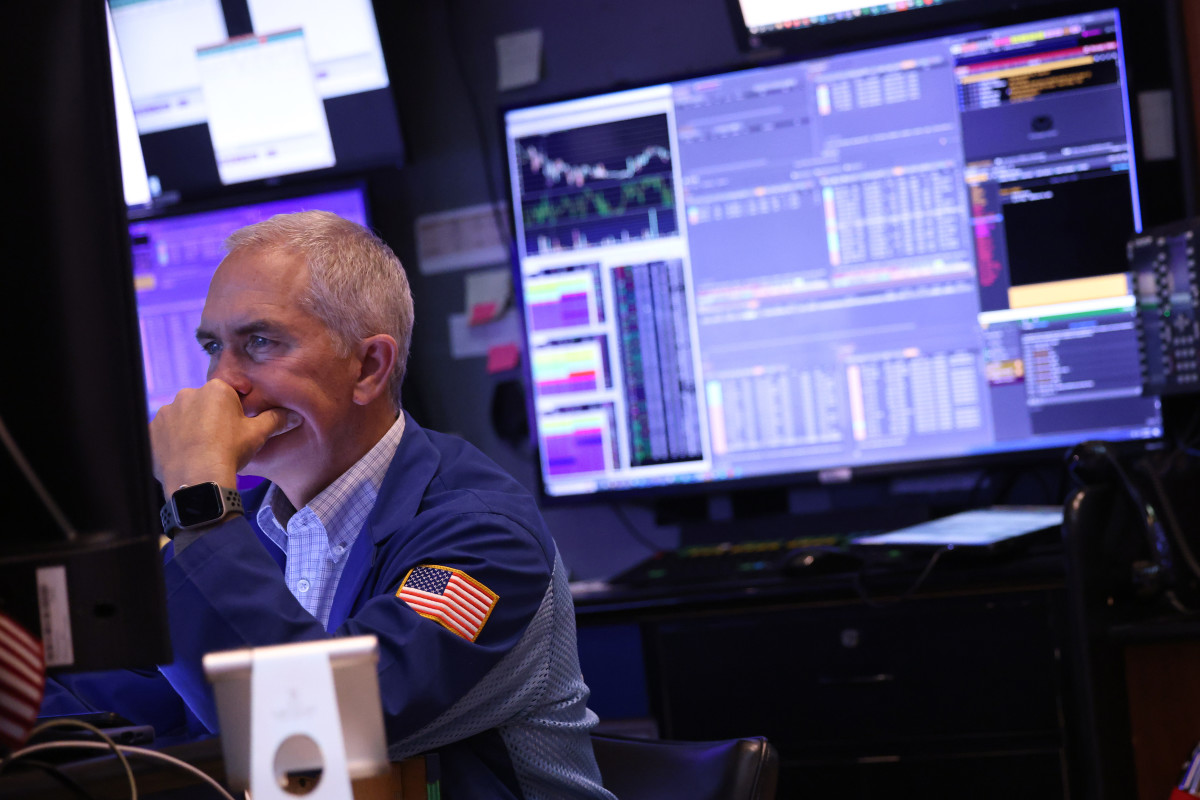
Wall Street may face its biggest test of the year next week. Investors face a challenging phalanx of earnings, economic data, and geopolitical risks as the market grapples with fading sentiment and a hawkish Federal Reserve.
The S&P 500 has given back more than half its year-to-date gains this month, falling 5.46% amid a big reset of Fed interest rate cut forecasts tied to faster inflation and stronger economic growth.
The biggest benchmark of U.S. blue-chip shares traded below its 50-day moving average last week, a key Wall Street performance metric, after one of the longest streaks above that level on record.
Treasury bond yields have also spooked markets, with 2-year notes briefly rising past the 5% level last week, nearly triple the current S&P 500 dividend yield. Ten-year paper tested highs of around 4.7%, a level seen only a handful of times since the global financial crisis.
Israel's reprisal attack on Iran and the simmering regional tensions tied to Hamas's October 7 invasion have also sapped risk appetite, driving safe-haven assets such as gold to all-time highs and lifted the dollar to near six-month highs against its global currency peers.

"Stocks have been due for a pullback for quite some time as it has been six months since we've seen a retreat of 8% to 10%," said James Demmert, chief investment officer at New York-based Main Street Research.
Stocks soften into earnings season
"The magnitude of this stock market correction will depend in large part on what's going on in the Middle East and how things play out from here," he added. "Any escalation of the current tensions would likely cause a further drop in stocks."
Bank of America's closely tracked 'Flow Show' report, meanwhile, showed some $9.1 billion left stock portfolios last week, extending the largest two-week outflow since December 2022.
That puts this week's corporate earnings and economic data slate in stark focus. Investors will seek to clarify valuations or reset end-of-year forecasts as rate traders push back bets on Federal Reserve interest-rate cuts until at least September and possibly beyond.
Related: No landing, no Fed rate cuts: the markets' new bet on 2024
Tesla's (TSLA) first-quarter earnings report, scheduled for after the close of trading on April 23, will likely provide the first catalyst for risk markets. The carmaker is also expected to disclose details of its difficult start to the year while clarifying CEO Elon Musk's evolving vision for the company he still controls.
Wedbush analyst Dan Ives said the call with investors following the first quarter update might be "the most important moment in the company's history."
"We maintain our outperform rating and have always viewed Tesla through a long-term lens as one of the most disruptive companies in the world," Ives said. "However, the clock has struck midnight for Musk to lay out the strategic plan for the future."
Related: Analyst overhauls Tesla price target amid major strategy shift
Tesla's update, in fact, marks just one of 159 S&P 500 reports expected over the five-day period starting April 22, including Magnificent 7 peers Meta Platforms (META) , expected on April 24, and Microsoft (MSFT) , Alphabet (GOOG,) and Amazon (AMZN) , due the following day.
LSEG data suggest that collective S&P 500 first-quarter profits will rise 2.9% from a year earlier to a share-weighted $447.9 billion, with that rate improving to 10.7% over the three months ending in June.
Around a third of the first quarter total will come from just two main sectors of the benchmark: Information Technology and Communications Services.
However, Adam Turnquist, chief technical strategist for LPL Financial, notes that while the Magnificent 7 tech stocks continue to dominate S&P 500 and Nasdaq performance, broader market participation is starting to improve.
Market breadth is improving
"Nearly 70% of S&P 500 constituents remain above their 200-day moving average. Moreover, cyclical/offensive sectors are leading the way, with financials, energy, industrials, technology, and materials reporting the highest breadth readings," he said.
"The lack of major damage to longer-term breadth across the offensive sectors suggests bullish leadership is still on stable ground despite the recent shakeout," he added.
Curiously, the upcoming earnings parade is likely to take a back seat to some key economic data releases this week, including the Commerce Department's first look at first-quarter GDP on April 25 and the March reading of the Fed's preferred PCE inflation gauge the following day.
Stronger-than-expected March retail sales data and the ongoing rebound in manufacturing activity have economists looking for a first-quarter advance of around 2.6%. That's down from the 3.3% pace recorded over the final three months of last year but still fast enough to delay talk of Fed rate cuts.
Related: Crude oil prices whipsaw on Mideast tension after Israel strikes Iran
That will likely prove equally true on April 26, when the Bureau of Economic Analysis publishes its March PCE inflation report, which Fed Chairman Jerome Powell hinted last week could see core price pressure holding at 2.8%, well above the central bank's 2% target.
"We've said at the Fed that we'll need greater confidence that inflation is moving sustainably toward 2% before it would be appropriate to ease policy," Powell told an event in Washington on April 16. "The recent data have clearly not given us greater confidence and instead indicate that it's likely to take longer than expected to achieve that confidence."
More Economic Analysis:
- Watch out for 8% mortgage rates
- Hot inflation report batters stocks; here's what happens next
- Inflation report will disappoint markets (and the Fed)
Bond markets, too, will likely dictate a big portion of the week's investment tenor, with a record $69 billion 2-year Treasury auction on April 23 likely in focus following muted foreign demand for benchmark sales earlier this month.
Also, curiously, bond markets are still pricing in the risk of a near-term recession, with the yield on 3-month bills trading at more than a full percentage point higher than that of 10-year notes. That marks the longest inversion of the yield curve on record, at more than 544 days.
Demmert at Main Street, however, sees the recent rise in Treasury yields as a signal of economic strength, not weakness. He argues that the underlying market remains solid while rate cuts may be a long way off.
"Fewer than expected or even no rate cuts for the foreseeable future isn't something that will ruin this new bull market," he said. "In the early phase of a new business cycle, it's earnings — not the Fed — that drive stocks."
Related: Veteran fund manager picks favorite stocks for 2024







